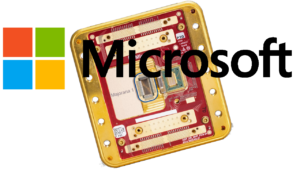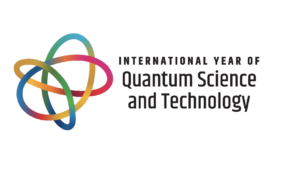As I pointed out in a previous post [“Quantum Future: Just Beyond Our Grasp“], some scientists believe that the effort to create a fully functioning quantum computer is a quixotic task; however, skeptics seem to be in the minority. One of the optimists who believes that fully functional quantum computers will be built is Lev Grossman. He wrote an article that focused on the debate about whether the D-Wave computer is actually a quantum computer. [“The Quantum Quest for a Revolutionary Computer,” Time, 6 February 2014] He concluded that regardless of how that debate ends, quantum computing technology could herald radical changes. Having read Grossman’s article about the D-Wave computer, Bert Olivier wrote, “There are only five of these at present, partly because they are impossibly expensive — about US$10 million each — and even more importantly, they only operate under extremely cold conditions; so cold, that it is a whisker from absolute zero, to wit -273.1 degrees Centigrade. This is the temperature required by the niobium chip inside the cooling cylinder. Just for the record, this is about one degree colder than what was believed to be the coldest known place in universe, Boomerang Nebula, about 5000 light years from Earth.” [“Quantum computing and the real: Ontological implications,” Mail & Guardian, 27 February 2014] In other words, quantum computers are not only expensive to build they are expensive to operate. The reason that such cold conditions are required is because qubits, the single particles that work the quantum magic with their ability to simultaneously represent both a “0” and a “1,” are extremely unstable. To increase their stability, researchers have had to create qubits in super-cold conditions and surround them with shielding.
However, earlier this year, a couple of different breakthroughs were announced that could bring quantum computing a little closer and whole lot cheaper. The first breakthrough was made by an international research group led by the University of Bristol that was able to integrate key components of a quantum computer onto a silicon microchip. [“Integration brings quantum computer a step closer,” Science Codex, 30 January 2014] The article explains:
“Scientists and engineers from an international collaboration led by Dr. Mark Thompson from the University of Bristol have, for the first time, generated and manipulated single particles of light (photons) on a silicon chip – a major step forward in the race to build a quantum computer. Quantum computers and quantum technologies in general are widely anticipated as the next major technology advancement, and are poised to replace conventional information and computing devices in applications ranging from ultra-secure communications and high-precision sensing to immensely powerful computers. While many of the components for a quantum computer already exist, for a quantum computer to be realized, these components need to be integrated onto a single chip. … While previous attempts have required external light sources to generate the photons, this new chip integrates components that can generate photons inside the chip. ‘We were surprised by how well the integrated sources performed together,’ admits Joshua Silverstone, lead author of the paper. ‘They produced high-quality identical photons in a reproducible way, confirming that we could one day manufacture a silicon chip with hundreds of similar sources on it, all working together. This could eventually lead to an optical quantum computer capable of performing enormously complex calculations.'”
According to the article, “the [University of Bristol] group, which, includes researchers from Toshiba Corporation (Japan), Stanford University (US), University of Glasgow (UK) and TU Delft (The Netherlands), now plans to integrate the remaining necessary components onto a chip, and show that large-scale quantum devices using photons are possible.” Mark Thompson, the group leader, asserts, “Our group has been making steady progress towards a functioning quantum computer over the last five years. We hope to have a photon-based device which can rival modern computing hardware for highly-specialized tasks within the next couple of years.” The second breakthrough was made by “scientists in Germany and the United States [who] found a way to make transistors out of diamonds, paving the way for rugged electronics such as computers that last practically forever.” [“Computers made of diamonds? Here’s how they’ll do it,” by Shaira Panela, GMA News, 29 January 2014] The breakthrough was announced in the journal Nature. Panela reports, “The Nature article said that ‘diamond remains a viable option for quantum computing, with its greatest selling point being its ability to hold quantum information for long periods of time, at room temperature and without a vacuum.’” I suspect it won’t be long before the University of Bristol group applies the diamond-based approach to its silicon-based chip design to create the next step forward. Interestingly, the diamonds used by the US/German scientists were intentionally flawed (or “doped”) to make them useful. Panela explains:
“Diamonds are, by nature, extremely tough. De Beer’s really wasn’t far off when it coined the catchphrase, ‘A diamond is forever’. But engagement rings aside, diamonds are boring: they’re nothing but carbon atoms stacked in the exact same way over and over again in a monotonously uniform ‘lattice.’ This is why ‘doping’ makes things interesting, because it intentionally adds defects to an otherwise flawless material. And, believe it or not, this is a good thing.”
Geoff Scarsbrook, operations manager of the research and development division of synthetic diamond manufacturer Element Six, explained to Panela why using doped diamonds in chips is better than using silicon:
“‘A “defect” implies something bad, but actually, scientifically it just means something is “not of the regular lattice”,’ explained Scarsbrook. ‘You can make good use of these defects: by manipulating the spin, you can measure magnetic fields sensitively, you can measure with very high special accuracy,’ he said. ‘What we have to do is to use a diamond that has very high purity except for a select number of defects that you want to use. … Particularly, you do not want other defects that have spin. Other defects tend to have their own spin and that spin can interact with the spin you are interested in and upset it,’ Scarsbrook added.”
Although developing chips that can be used in quantum computers is essential, the finicky qubit lies at the heart of making such computers work. Olivier reports, “The D-Wave Two is equipped with 512 qubits, and could therefore theoretically perform 2 to the 512th power operations at the same time. As Grossman reminds us, this represents more calculations than there are atoms in the physical universe.” That is why quantum computers are theoretically powerful and fast. One of the reasons that there has been controversy about the D-Wave machine is because it hasn’t proven to be faster than traditional computers. [For more on that subject, read: “Quantum Chaos: After a Failed Speed Test, the D-Wave Debate Continues,” by Seth Fletcher, Scientific American, 19 June 2014] Olivier goes on to note that there are analysts in a number of fields who are itching to tap that kind of potential power. He writes:
“Grossman lists stock trading as one of the areas where quantum computers can solve problems that ‘normal’ computers cannot. The other fields where Q-computers are in demand include surveillance practices (such as those associated with the NSA), medicine, software design and problem-solving of all kinds, such as the most time-economizing route among several destinations. If they work, they can probably solve problems — at least abstractly — that are far more complex than those found in these fields.”
As I noted in the article mentioned at the beginning of this post, despite all of the breakthroughs that are being made, the timeline for creating a fully functional quantum computer continually seems to be pushed into the future. In my next post about quantum computers, I’ll discuss some of the interesting work that is being done with qubits.




